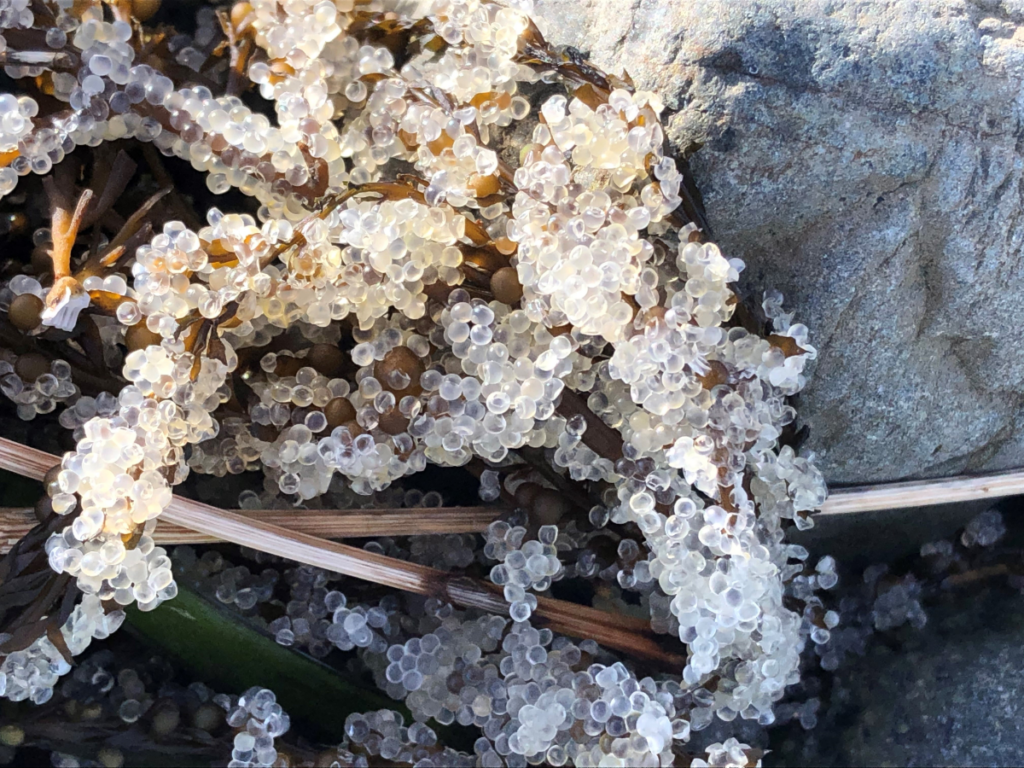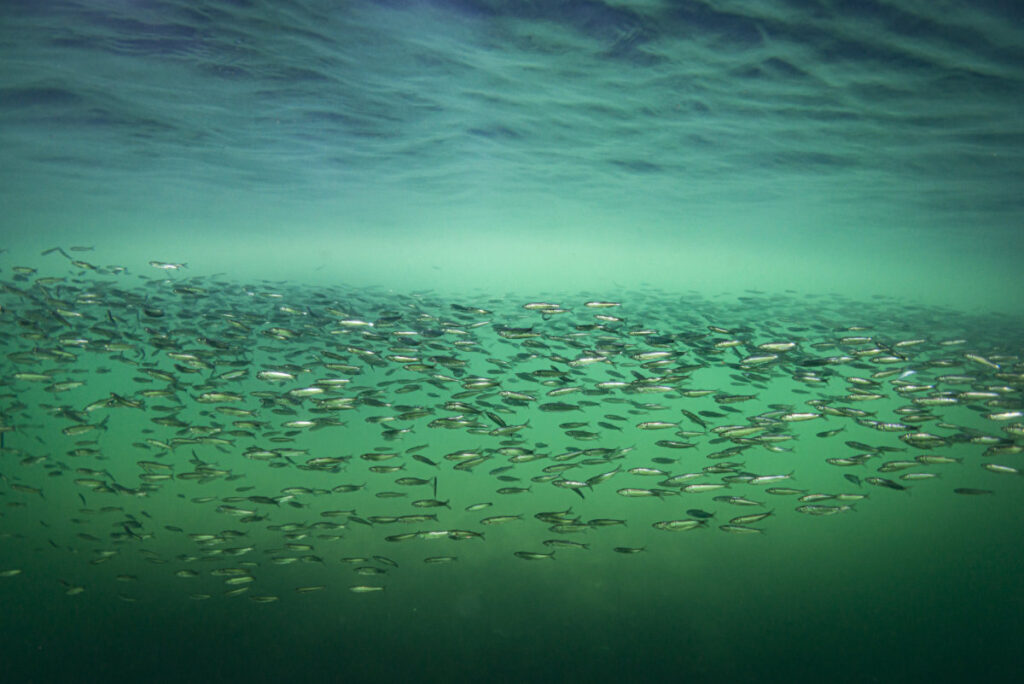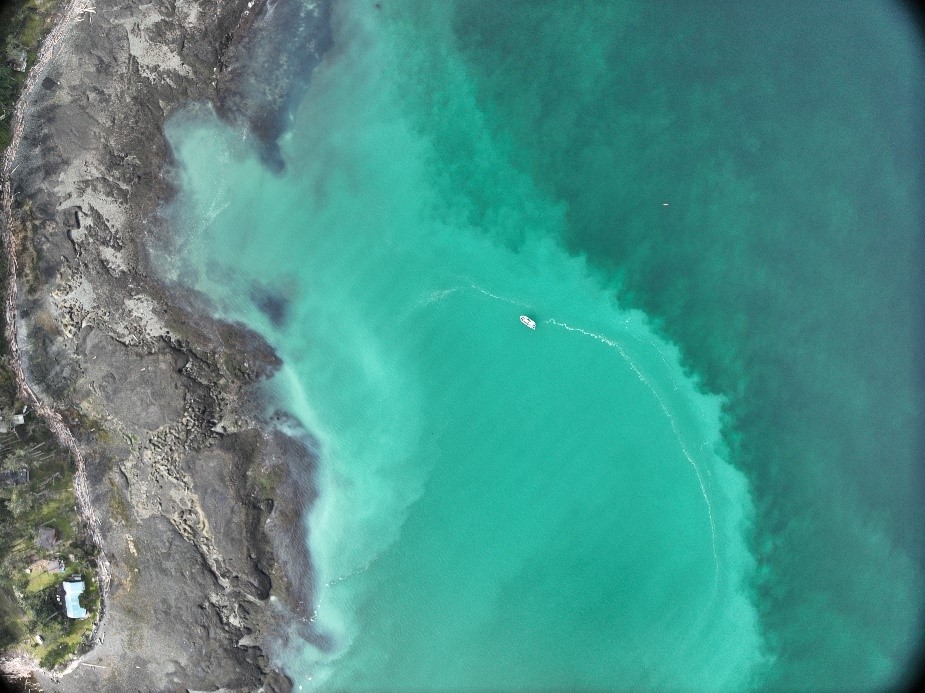Pacific herring are one of the most significant links in the Salish Sea food web. As the dominant forage fish in the Strait of Georgia, this relatively small unassuming fish performs the critical role of transferring energy from small plankton to larger predators — from Pacific salmon to whales, birds, and seals. For salmon, herring availability is intrinsic to their growth and survival throughout their seagoing lives. We as humans also depend on Pacific herring. BC has had a commercial herring fishery for over 100 years and herring has been a foundational food source for First Nations who relied on the abundant fish and prized roe since time immemorial.
With the results of the Salish Sea Marine Survival Project pointing to ‘Food Supply’ and ‘Predation’ as the most impactful pressures on early marine survival of salmon (figure below), and herring being inherently linked to both, improving our understanding of Pacific herring in the Strait of Georgia was a clear next step.
The Pacific Salmon Foundation Marine Science Program has begun a new herring research project that will be funded through 2026, thanks to a successful British Columbia Salmon Research Innovation Fund (BCSRIF) proposal. The overall project is focused on addressing key questions and knowledge gaps in salmon-herring interactions. It is built around four activities all of which are being developed and implemented in cooperation with partnering Strait of Georgia First Nations with the concurrent aim of building capacity within those Nations.
Activity 1 – Availability of Age 0 herring
Herring in their first year of life (age-0) are critically important prey for Chinook and coho salmon in their first year at sea. Comparing recent and historical salmon diet information suggests that age-0 herring may be less available to juvenile salmon than they were during periods of higher salmon survival and abundance (prior to the 1990s). This reduced availability could be a consequence of lower age-0 herring abundance, later appearance of age-0 herring in the spring, increased herring size relative to juvenile salmon (making them too large to eat), or some combination of these three factors operating at different regional scales in the Strait of Georgia.
Herring in their first year of life (age-0) are critically important prey for Chinook and coho salmon in their first year at sea. Comparing recent and historical salmon diet information suggests that age-0 herring may be less available to juvenile salmon than they were during periods of higher salmon survival and abundance (prior to the 1990s). This reduced availability could be a consequence of lower age-0 herring abundance, later appearance of age-0 herring in the spring, increased herring size relative to juvenile salmon (making them too large to eat), or some combination of these three factors operating at different regional scales in the Strait of Georgia.
The focus of the first activity will be on factors controlling the availability of age-0 herring to salmon. A key question will be to understand whether loss of spatial and temporal diversity in spawning is impacting the availability of juvenile herring to juvenile salmon.
Part of this activity will be a desktop exercise, revisiting historical data from DFO’s herring spawn and juvenile herring surveys to determine whether the presence of local spawns may influence when, at what abundance, and at what size, juvenile herring become available to juvenile salmon. The other part will be a field sampling program in collaboration with Strait of Georgia First Nations to investigate the availability of juvenile herring to juvenile salmon in periods and regions not covered by existing sampling programs.

Activity 2 – Understanding Non-migratory Herring
At the end of the twentieth century, First Nations, community stewards, and fishers reported the disappearance of adult herring that were formerly abundant in the Strait of Georgia during the summer. Traditional ecological knowledge suggests that herring had previously been available to Coastal First Nations year-round. In the last 10 years, anecdotal accounts suggest at least a partial return of these fish, with large, primarily deep-water schools of adult ‘resident/non-migratory’ herring consistently observed through summer in the Northern Strait of Georgia.
The second activity aims to develop the ability to track changes in the abundance of resident/non-migratory herring in the Strait of Georgia, and in turn, understand factors that may be driving these changes and implications for salmon and the rest of the ecosystem.
The first part of this activity develops innovative means to survey herring abundance and biomass using scientific echosounders validated with drop cameras and jigging. The goal of the acoustic surveys will be to derive minimum biomass estimates for Strait of Georgia resident/non-migratory herring. The team will also build the capacity of partner nations to carry on the techniques and become actively engaged in marine fisheries research and assessment. The second part will employ a novel otolith microchemistry tool to compare residents and migrants, allowing identification of factors controlling abundance of resident herring.

Activity 3 – Herring Spawn Habitat assessment
Spawn duration and distribution have decreased since the 1980s in the Strait of Georgia, with peak spawning now occurring around early March. Spatial spawn distribution has also shifted to be concentrated in the northwestern regions of the Strait of Georgia, whilst southern spawn sites have been abandoned for reasons unknown.
The third activity focuses on spawn habitat, to understand why spawn distribution has changed and what characterizes good or healthy spawning habitat. There are two projects within this activity and they are being carried out by two UVic Master’s students.
From Maycira Costa’s lab, Loïc Dallaire is using satellite imagery to detect spawning events that may be missed by the existing DFO overflight surveys. This will address the concerns of First Nations that existing programs built around documenting spawn in core fishing areas may miss spawns within their territories.
In Amanda Bates’ lab, Jake Dingwall is investigating potential drivers of spawning habitat loss. By understanding this, we can better conserve those habitats, and potentially rehabilitate abandoned habitats that were once productive.

Activity 4 – Traditional Knowledge
The herring research priorities workshop clarified the concern that is felt by many First Nations as a result of the loss of herring in their communities, as well as the loss of understanding and knowledge about the value for herring in First Nation youth.
This final activity therefore aims 1) to document oral histories through videography where First Nations elders and representatives discuss the value of herring to First Nations communities, 2) host a series of gatherings, celebrations and events that enable knowledge transfer about herring from First Nation elders to youth, 3) create educational materials and curriculum to teach First Nation youth about herring, 4) document educational videos of cultural practices around herring and herring food preparation.
The benefits of this final activity will be a shared understanding of the historical status and utilization of herring in the Strait of Georgia, and will also engage and educate youth to develop the next generation of marine stewards.